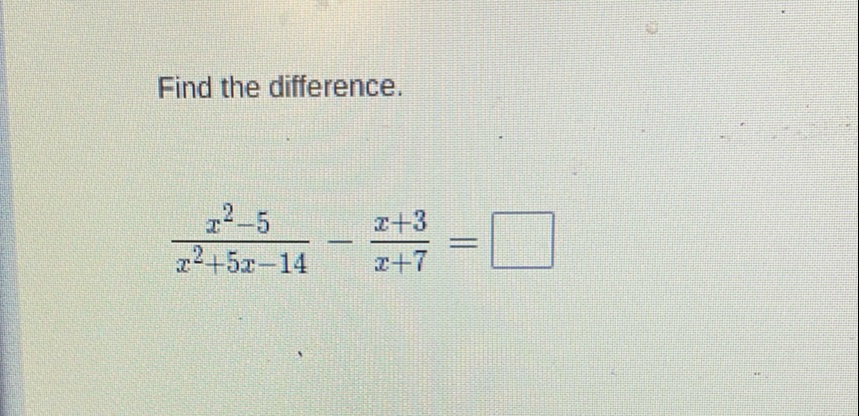AI tutor
Full solution
Q. Find the difference.
- Factor Denominator: First, factor the denominator of the first fraction.The quadratic can be factored into .So, becomes .
- Combine Fractions: Notice that the denominator of the second fraction is , which is a factor of the denominator of the first fraction.This means we can combine the two fractions over a common denominator, which is .
- Adjust Second Fraction: Rewrite both fractions with the common denominator.The first fraction is already in the correct form, but the second fraction needs to be adjusted.We multiply the numerator and the denominator of the second fraction by to get the common denominator.So, becomes .
- Subtract Fractions: Now, subtract the second fraction from the first fraction.
- Expand Second Fraction: Expand the numerator of the second fraction.
- Substitute Expanded Form: Substitute the expanded form back into the numerator of the combined fraction.
- Simplify Numerator: Simplify the numerator by combining like terms.
- Write Simplified Form: Write the simplified form of the expression.
- Check for Simplification: Check for any possible simplification or cancellation. There are no common factors between the numerator and the denominator, so this is the final simplified form.
More problems from Solve multi-step equations with fractional coefficients
QuestionGet tutor help

